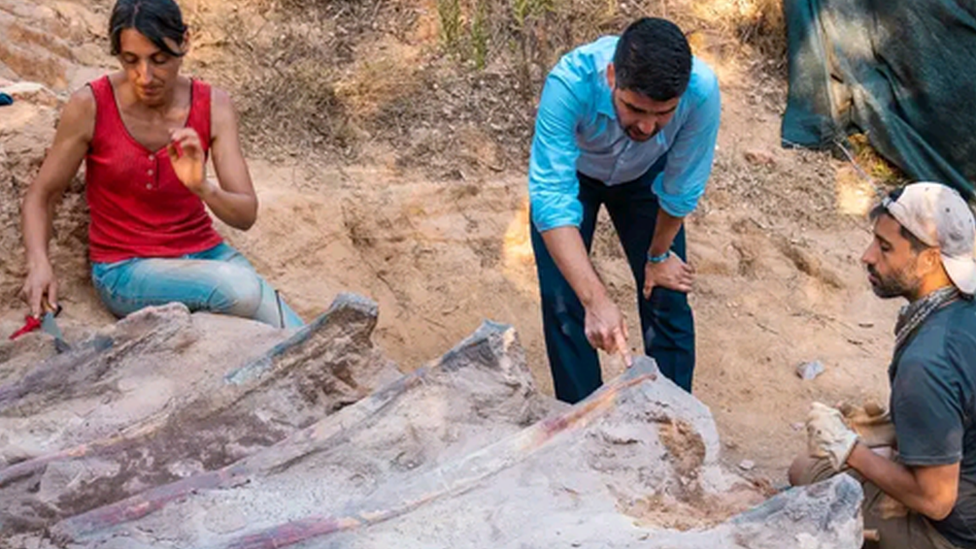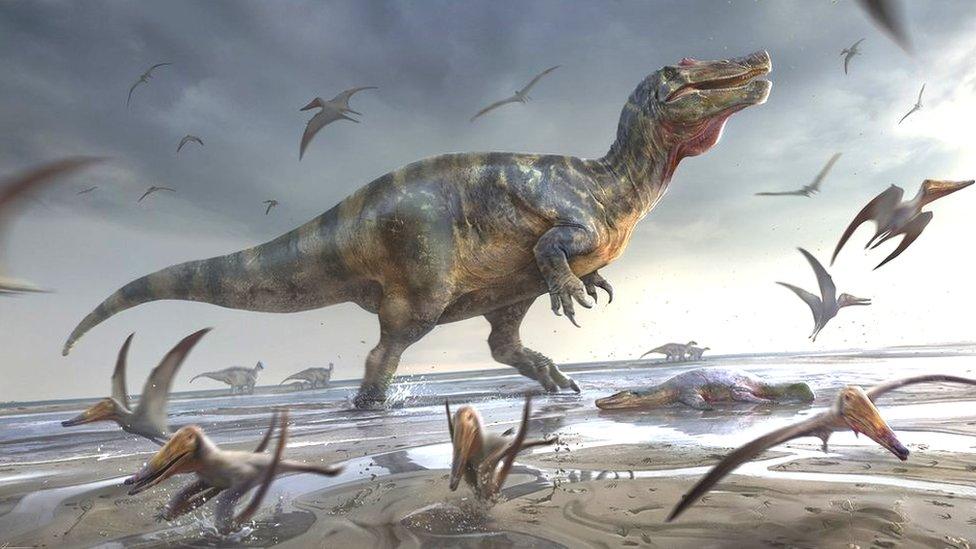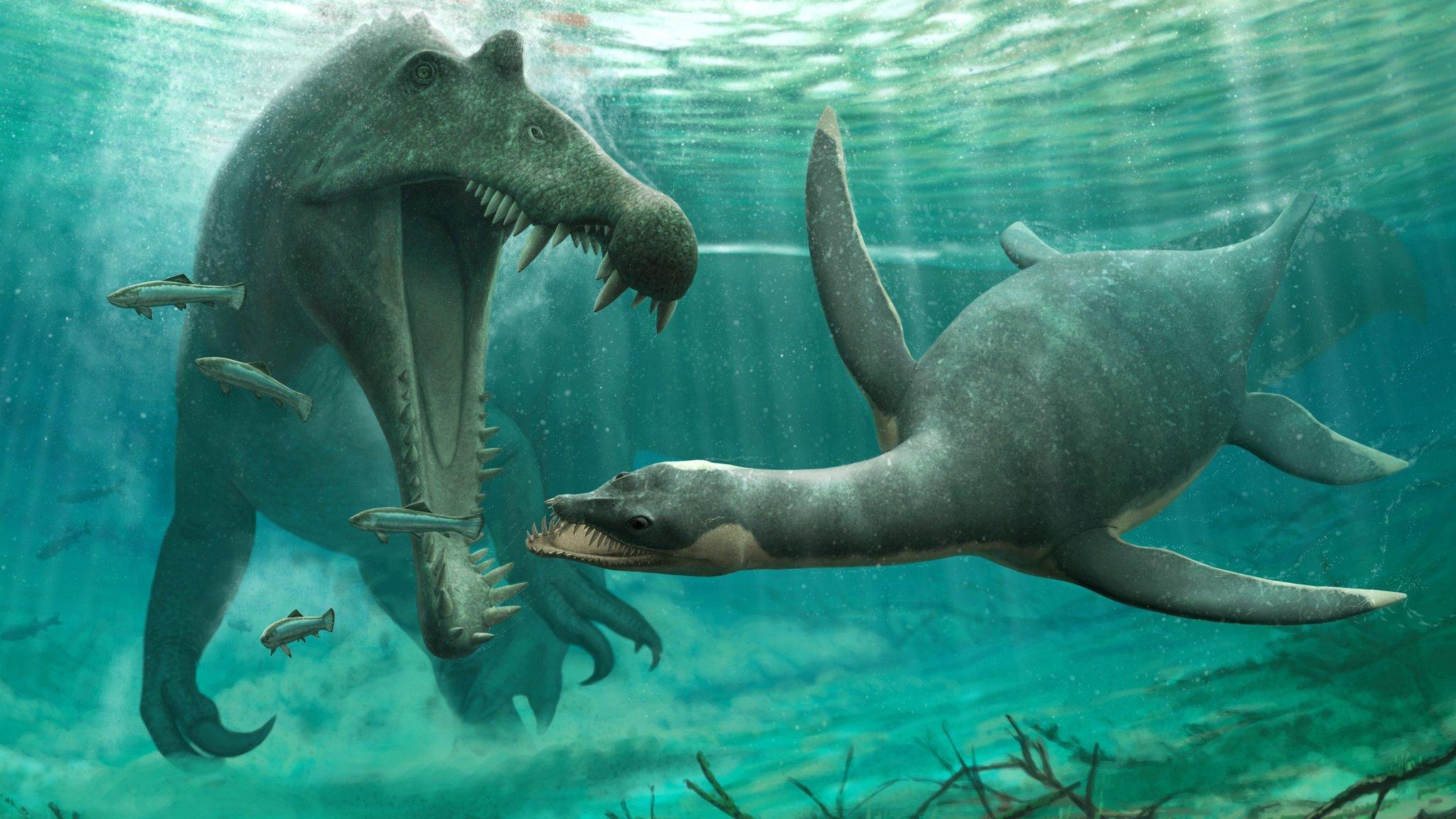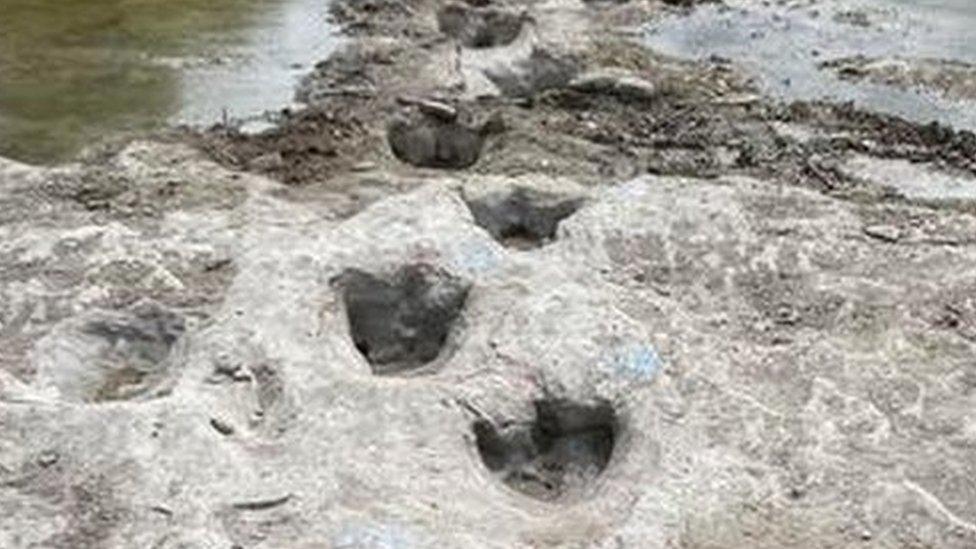Huge dinosaur skeleton unearthed in Portuguese garden
- Published

Palaeontologists were shocked to find the skeleton largely intact.
The remains of what could be the largest dinosaur ever discovered in Europe are being excavated in a Portuguese back garden.
The fossilised skeleton of a sauropod was discovered in the central city of Pombal in 2017, when a man began building work on his house.
Sauropods were the biggest of all dinosaurs and the largest land animals to have ever lived.
They had long necks and tails, ate plants and walked on four legs.

Work is under way to uncover more of the dinosaur.
Earlier this month, palaeontologists from Portugal and Spain unearthed parts of the spine and ribs of a possible brachiosaurid sauropod which suggest the huge reptile was about 12m (39ft) tall and 25m (82ft) long.
The skeleton has been found in Upper Jurassic sedimentary rocks, suggesting it is about 150 million years old.
The skeleton - found in the position that the dinosaur probably died in - is now being studied by an international research team.
Because of the relatively intact positioning of the skeleton, palaeontologists working on the dig are hopeful that there is more of it they are yet to unearth.
"It is not usual to find all the ribs of an animal like this, let alone in this position, maintaining their original anatomical position," Elisabete Malafaia, post-doctoral researcher at the Faculty of Sciences of the University of Lisbon, told the Phys.org website.
- Published9 June 2022

- Published29 September 2021

- Published27 July 2022

- Published23 August 2022
